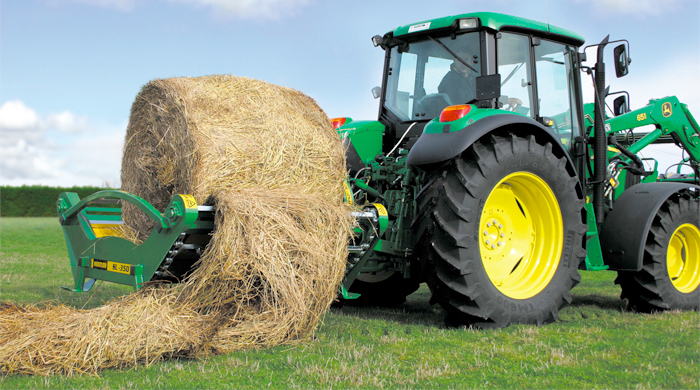
Reducing downtime on farm equipment and improving resource utilisation are two areas where telematics is making an impact on agricultural production. However, Ben Turner of Ben Burgess – East Anglia’s largest agriculture and construction machinery dealer – says there are many more opportunities for advanced engineering and electronics within the industry and these are to be discussed in an Agri-Tech East Pollinator meeting.
Ben Burgess is a family run business that has been supplying the agricultural community with machinery since 1931. Sales and marketing manager, Ben Turner says that intelligent use of data to increase resource efficiency is now a key driver in the industry as it maximises crop yield and farm income.
“To support this we have been investing in the latest technology to add value to the machinery we supply.
“Our role has changed quite a lot over recent years. Originally we’d sell a machine and offer a maintenance package, servicing the vehicles when the farmer contacted us. Now we are able to be more proactive and prevent breakdowns, this is achieved through telematics, where information about the equipment is sent electronically so we can monitor its performance remotely.
“Now I can sit at my computer in the office reviewing the machinery we’ve sold hard at work in the fields. I know its exact location, the fuel in the tank, what job it’s doing and how much of the engine is being utilised.
“The farm manager can also access this, giving them invaluable information about asset usage. For example, tractors are serviced on hours worked rather than miles, when the engine is switched on the timer starts. If the tractor’s static for 20% of that time then it is not only wasting diesel but is being serviced too often.”
The software within the tractor can determine any potential problems, automatically generating an email alert if an issue is detected.
“What’s great about telematics is we know the problem without looking at the tractor,” says Ben. “I can order parts or send out a technician who knows exactly how to fix it. If it’s not vital, such as a blocked air filter, the next time one of my guys is in the area, they can pop in and replace it, preventing a problem from developing.”
For software issues the Ben Burgess service team can remotely access the control panel in the tractor to solve the problem with less inconvenience for the farmer.
GPS guidance systems have become so advanced that a tractor can self-steer to within a centimetre of accuracy, allowing the driver to miss a row and then back-fill, eliminating the need for a 3-point turn. Using the same tramlines reduces soil compaction and cuts down on overlap when sowing or applying fertiliser.
Ben explains “Most farming equipment now monitors something. A combine harvester records the amount of grain being harvested every second and when analysed with the location data, the farmer knows exactly where his field is most fertile. When drilling seed the next year, this information can be used to increase or decrease seed rate, making the most of the land and resources.”
Variable rate application can also be used for fertilisers and herbicides. New technology, only available in the last 6 months, can wirelessly programme the tractor with specific distribution instructions for each product, rather than manual entry.
Ben sees opportunities for extending this functionality to new areas and thinks that irrigation should be the focus for future developments in precision farming.
“Water is becoming increasingly scarce, so soil moisture content will be vital for maintaining crop yield. High sensitivity ground water sensors that measure the water present in soil to a depth of 100cm and send this information wirelessly to the farmer would help improve efficiency.
“Wind speed and direction can affect herbicide application. By using mini weather systems located in the field the farm manager would be able to make decisions about spray timing from the office, rather than checking the fields.”
The Engineering, Electronics and Software Pollinator will have presentations from Ben and Andy Thurman, CEO of Omnisense. Andy will be talking about a new technology that detects early changes in livestock behaviour making it easier for farmers to identify the early stages of disease.
After these short talks that will help stimulate discussion, the meeting takes on a ‘speed-dating’ format allowing the delegates to locate others with a mutual interest. Belinda Clarke, Director of Agri-Tech East says “We are bringing together technologists and entrepreneurs with new innovations and solutions to try and solve issues not currently addressed by existing technologies.”
